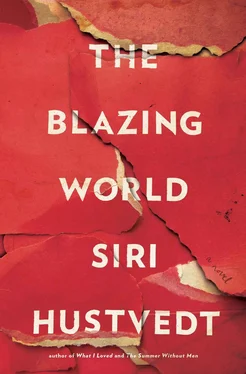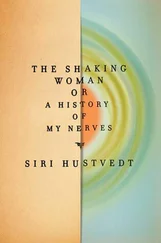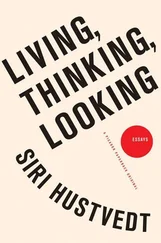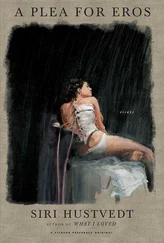Richard Brickman
I. Burden as Brickman is referring to poststructuralist, continental theory, which maintains that perception of things in the world is socially created (constructed) and maintained in cultural tradition. If, as some recent science suggests, human perception is shaped by expectation, then the constructionists, Brickman argues, have a point.
II. Blindsight is the name given to a condition in patients who, despite lesions in their primary visual cortex, retain visual capacities but insist they can see nothing. When presented with an object and asked to identify it, these patients guess correctly at a much higher level than chance, which implies that what they are missing is the awareness of an object they have registered implicitly. See Lawrence Weiskrantz, “Blindsight Revisited,” Current Opinion in Neurobiology 6 (1996): 215–20. In visual masking studies, a visual stimulus, “the target,” becomes less visible due to interactions with other stimuli that are called “masks.” For example, when a target stimulus is presented to a viewer and then immediately followed by a mask, the target is rendered invisible. Nevertheless, research has demonstrated that the content of the target image can have a subliminal effect on the subject. See Hannula et al., “Masking and Implicit Perception,” Nature Reviews Neuroscience 6 (2005), 247–55.
III. Although the entire pseudonymous letter may be read as ironic, the ironies are more and less layered throughout. Brickman never mentions Kierkegaard by name, but Burden’s reference to the “crowd” in the quotation, supposedly in Burden’s own voice (a direct communication), must be read as an allusion to the Danish philosopher, who writes in The Point of View, “ Even good-natured and worthy people become like totally different creatures as soon as they become the ‘crowd’. . One must see it close up, the callousness with which otherwise kind people act in the capacity of the public because their participation or nonparticipation seems to them a trifle — a trifle that with the contributions of the many becomes the monster” ( Kierkegaard’s Writings , vol. XXII, 65). Her commentaries on Kierkegaard and “the crowd” in Notebook K suggest that Burden is making ironic sport of Brickman’s superior, authorial tone when he speaks of “rhetorical exaggeration.” Brickman’s language serves as the restrained context for the vulgarity and passion of the quotation.
IV. Brickman’s assertion that Burden is an “extremist” resonates with many evolutionary sociobiologists who take an essentialist position on sexual difference. Writing in Notebook F, however, Burden does not deny sexual biological differences. She argues that beyond the obvious reproductive differences between the sexes, all other differences, should they exist, remain unknown. She refers to the burgeoning field of epigenetics and “the seamless relation between experience and gene expression.”
V. This paragraph is so compressed it suggests parody. Even the somewhat obscure references, however, are not fictional. W. T. H. Myers was a psychical researcher and a friend of William James, who argued for a “subliminal self” in his magnum opus, Human Personality and Its Survival of Bodily Death (London: Longman’s, Green & Co., 1906). Pierre Janet, neurologist and philosopher, was a contemporary of Sigmund Freud’s. Despite the fact that his idea of dissociation remained influential in psychiatry, he had been mostly lost as a thinker until recent years. See The Major Symptoms of Hysteria: Fifteen Lectures Given in the Medical School of Harvard University (London: Macmillan, 1907). The core or primordial self figures in neuroscience research. In Notebook P, Burden took notes on Jaak Panksepp’s Affective Neuroscience (Oxford: Oxford University Press, 1998), 309–14. Pauli Pylkkö is the author of The Aconceptual Mind: Heideggerian Themes in Holistic Naturalism (Amsterdam: John Benjamins, 1998). Which works by Siri Hustvedt Brickman/Burden has in mind are unclear, although in Notebook H, she notes that the author’s novel The Blindfold is a “textual transvestite” and “a book of the uncanny, à la Freud.” Brickman’s final comment about “irrationality” may be glossed by Burden herself. In Notebook F, she writes, “In the history of the West, women have been continually choked, smothered, and suffocated by the word irrational .”
William Burridge (interview, December 5, 2010)

Hess: I know that you don’t give many interviews, so I’d first like to thank you for agreeing to participate in this project. I know you’re off to the airport soon, so I’ll try to be brief. One journalist wrote that you are an art dealer with “the Midas handshake,” by which he meant that when you take on an artist, his or her reputation rises among collectors. Your relationship with Rune began at the end of the nineties, but I would like to focus on the controversy over Beneath . I’m curious to know if you had any suspicion that Harriet Burden had been involved in the creation of that installation.
Burridge: I knew that Harriet Lord collected Rune, and he mentioned that she had helped fund Beneath . Felix Lord and I were acquaintances, and I knew his wife a little. She gave some great dinners at their apartment. I found her a little odd and silent, but awfully chic, and perfect for Felix. You know, when she was young, she looked like a painting, an early Matisse circa 1905 or that famous Modigliani canvas Woman with Blue Eyes . I knew she had dabbled as an artist, but the story that came my way was that after Felix died she had a nervous breakdown and then reemerged a few years later to build on the Lord collection. I know she sold a Lichtenstein and bought several works by a young artist, Sandra Burke, who has since done very well. The word was Harriet had a sharp eye, but the thought that she was involved in making Rune’s work never occurred to me. She didn’t even attend the opening of Beneath , although she was invited to it and to the dinner afterward. You have to remember that Rune was a hot commodity. The Banality of Glamour was a hit, and he followed that hit with the crosses. I thought it was very smart work. Reviewers and critics loved the guy, even though there were some who dumped on the crosses.
Hess: The letter to the editor in The Open Eye announced that Burden was the artist behind not only Beneath , but also Anton Tish’s The History of Western Art and Phineas Q. Eldridge’s The Suffocation Rooms . How did you respond?
Burridge: I hadn’t seen The Suffocation Rooms . I didn’t even know about that show. The gallery is off the beaten track, and it didn’t get much attention. I had seen the Tish show. I thought there was too much going on in it to really lift it off the ground, if you know what I mean, but the kid was someone to watch. I received an e-mail from a friend that included a link to the Open Eye article. I read it, and let’s face it, it’s not for your average reader — and those weird feminist comments about smelly balls. She sounded like a man-hating flake. I can think of a lot better ways to go public. It’s hardly a mainstream publication. You get to the end of it and say, huh? And who the hell is Richard Brickman?
Hess: Well, I couldn’t find him. There are many Richard Brickmans, as it turns out, but not a single one of them who could have written that piece. A Richard Brickman did publish a paper in The Open Eye about a year before, a rather dull but intelligent examination of John McDowell’s arguments about the conceptual structures of human experience, after which he made a counterargument.
Читать дальше













